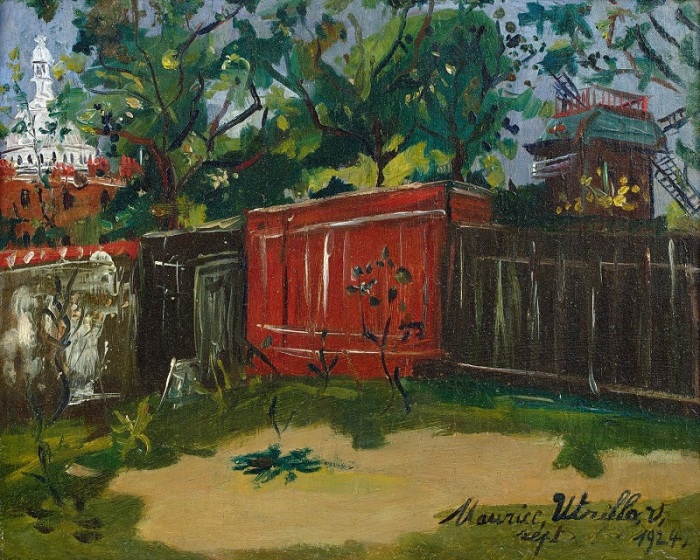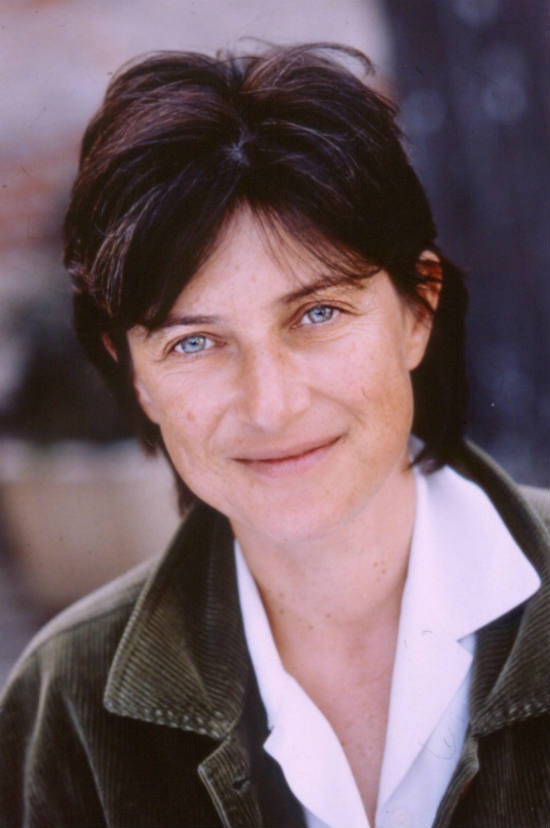Starting today, all new Arts Voyager stories and art will be distributed exclusively by e-mail, to subscribers. Subscriptions are just $49/year ($25/year, students and unemployed artists), and include archive access to both the Arts Voyager and the 2,000-article Archives of The Dance Insider, our sister publication. To subscribe, designate your PayPal payment in that amount to paulbenitzak@gmail.com . Or write us to at that address to find out about other payment methods and about paying in Euros or British pounds. If you are already an Arts Voyager or Dance Insider subscriber, you are already signed up. Special Offer: Subscribe before December 15 and receive a second subscription for free — the perfect holiday gift for the Arts Voyager on your list.
Category Archives: Suicide
 Maurice Utrillo, “Le Moulin de la Galette,” 1924. Oil on panel, 25.6 x 31.3 cm. Signed lower right. Image copyright and courtesy Artcurial.
Maurice Utrillo, “Le Moulin de la Galette,” 1924. Oil on panel, 25.6 x 31.3 cm. Signed lower right. Image copyright and courtesy Artcurial.
By Paul Ben-Itzak
Copyright 2016 Paul Ben-Itzak
If it’s true that, as an early champion, Francis Jourdain, observed (in “Utrillo,” Les Editions Braune & Cie, 1948, Paris), Maurice Utrillo (1883 – 1955) was “essentially urban…, a portraitist of walls…[, of] their customs, their particularities, the thousand manners that they adorn themselves to be livid or sparkling, their tattoos, their lizards, their lichens, their leprosy, all their maladies of erosion and billboards,” it’s also true that he was the foremost chronicler of a Montmartre landscape in the final stages of its transformation from bucolic pastoral suburb to monochromic metropolitan annex. The harmony he brought to this conflictual landscape was imbued with new prismatic vigor in the 10-year period that began in 1923 when, following a suicide attempt, Utrillo’s artist mother Suzanne Valadon (one-time model for Renoir and Degas) and her companion Andre Utter started taking him to the Saint-Bernard Chapel near Bourg-en-Bresse to recuperate. If Utrillo wasn’t crazy about the countryside, he appreciated rural reds, notes Georges Boudelle (“Utrillo,” le Musee Personnel, Paris, 1966), and his palette was imbued with a new brilliance revealed in lush reds, blues, and greens, reflected in the synthesis of the 1924 “Le Moulin de la Galette” (above), on sale in Artcurial’s October 18 Impressionism and Modern auction in Paris. The oil on panel might also benefit from the veneer of nostalgia, given that during this period intersected by sojourns at Saint-Bernard, Utrillo was frequently painting from memory. If Artcurial’s pre-sale estimate of 28,000 – 32,000 Euros might seem exorbitant for a 25.6 x 31.3 cm piece, its supported by several elements unique in Utrillo’s oeuvre. The sky — never higher and more vast than in Montmartre! — is not the grim grey we’re used to, but a light blue which permits the darker reds and greens in the forefront to flourish without seeming oppressive. There are none of the austere Haussmanian apartment behemoths, whose dull facades Utrillo captured by mixing sand into his pigment. And with the inclusion of a Sacre Coeur imposed on the defeated Communards of 1871, the observation post below it (its actually grey gussied up to rust), the windmill at the right, and the vestiges of verdure cruelly cut off by the n’importe quoi fences of haphazard urbanization, he encapsulates several Montmartroise epochs. Add to this the absence of human figures usually sketched as apparent after-thoughts or, in this period, as malicious caricatures, the women with ballooning skirts — but without the lonely melancholy this void produces in Utrillo’s more grey street views — and you have a faultless oeuvre.
Chantal Akerman: On n’est pas encore prete a vous oublié

Chantal Akerman. Courtesy Marian Goodman Gallery.
“Most of the time when people like a film, they say, ‘I didn’t even feel the time pass.’ I want the film-goer to feel the time pass.” — Chantal Akermam
“Comparable in force and originality to Godard or Fassbinder, Chantal Akerman is arguably the most important European director of her generation.” — J. Hoberman
“Ce que le public te reproche, cultive-le, c’est toi.” – Jean Cocteau, cited in “Cocteau par lui-meme,” edited by André Fraigneau. Seuil, 1957.
By Paul Ben-Itzak
Text copyright 2015, 2016 Paul Ben-Itzak
(Chantal Akerman committed suicide in Belleville, Paris, a year ago today. The Cinematheque Francaise, whose programming appears increasingly box-office driven under new management, has yet to announce a retrospective. The same goes for the Centre Pompidou, France’s national museum for modern art, although you can find several of Akerman’s documentaries in the museum’s video library. This story was first published on the Arts Voyager on November 6, 2015, a week before the terrorist murders of 130 civilians on the terraces and in the music halls and sports stadiums in and around Paris. A week after the massacres, I encountered a documentary maker who suggested that perhaps, in deciding to take her life, Akerman – the daughter of a Holocaust survivor – had a premonition of things to come and didn’t want to be around to witness them. PS: “Jeanne Dielman…” will be projected Sunday, October 9 at 7h15 p.m. at the San Francisco Museum of Modern Art, presented by Wayne Wang.)
PARIS — Exiting an artist’s atelier off the rue de Couronnes while touring the Open Studios of Belleville last Spring, I almost came face to face with three teenaged marines wielding AK47s, guarding a low building on the fringes of the hilly Parc Belleville. When I quipped later to a French pal that it was nice to see the government finally doing something to protect artists and told her the location, my friend observed, “That’s around where Chantal Akerman lives.” While it’s not inconceivable that a renowned Jewish film-maker might be considered to need protection as much as Jewish schools (usually unmarked here, as if the spectre of the Deportation still makes French Jews discrete), in the end it might be tempting to conclude that for the Brussels-born film director and installation artist, who killed herself here in Belleville (from where I write you) October 5 at the age of 65, the biggest enemy was herself. But this cop-out explanation would be absolving too conveniently a pop culture-centered media (yes, even here in France) which supports less and less artists who march to their own drummer and who are more interested in teaching us something – in Akerman’s case, elevating our awareness and heightening our perception of time — than diverting our attention.
To access the full version of the article, including more images, subscribers please e-mail paulbenitzak@gmail.com . Not a subscriber? 1-year subscriptions are just $39.99, or $19.99 for students and unemployed or under-employed artists. Just designate your PayPal payment in that amount to paulbenitzak@gmail.com , or write us at that address for information on how to pay by check or in Euros or British pounds.
